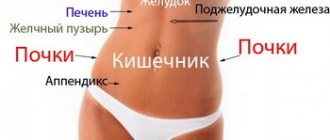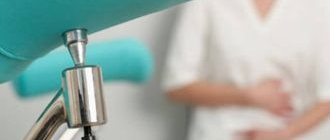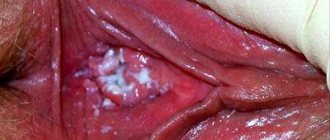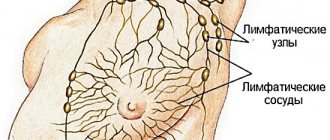Possible causes of nagging pain in women
Nagging pain in the lower abdomen occurs very often in women for various reasons.
But, unfortunately, while they are not clearly expressed, patients are in no hurry to see a doctor. And this is wrong, because many gynecological diseases develop secretly for a long time. This means that their treatment may be more difficult in the future. Nagging pain in the lower abdomen is usually associated with pathologies of the pelvic organs. First of all, this applies to the uterus and ovaries. In addition, such pain can occur for physiological reasons.
The main pathologies that can lead to the development of serious consequences without timely and proper treatment:
- Diseases of the uterus and ovaries - uterine fibroids, endometriosis and ovarian cysts.
- Sexual infections.
- Scars after surgical interventions.
- Infectious and inflammatory diseases of the urinary system, in particular pathologies of the kidneys and bladder.
- Diseases of the large intestine.
It is very dangerous if the nagging pain is caused by the intrauterine device. This may indicate the development of complications that, without timely treatment, will require surgical intervention in the future. Pathologies that occur during pregnancy are also dangerous.
Functional reasons that pose a threat to a woman’s health are the following:
- Algodysmenorrhea
, if it occurs against the background of abnormal position of the uterus or its underdevelopment. - Bend of the uterus
, which leads to stagnation of menstrual blood in the organ cavity. - Ovulatory syndrome
. Due to certain individual characteristics of the female body, every time ovulation occurs, aching pain occurs in the lower abdomen, which disappears within a short time and is not a dangerous sign.
Intestinal problems
When answering why there is a burning sensation in the lower abdomen, disorders of the digestive tract should be mentioned. Discomfort and burning can be associated with inflammatory processes, diverticulitis, colitis and other pathologies. Irritable bowel syndrome is also quite common - an ailment of a neurological nature (its symptoms develop against a background of stress).
It is always important to pay attention to other unpleasant sensations. In addition to burning, severe pain may be present. Patients experience digestive disorders, including bloating, frequent diarrhea, which is followed by constipation, and increased formation of intestinal gases.
Diseases that cause nagging pain in the lower abdomen
A symptom of many serious diseases is aching pain in the lower abdomen in women.
These may be the following diseases of the reproductive organs:
- Adnexitis or salpingoophoritis
. This pathology is characterized by inflammation of the uterus, fallopian tubes and ovaries due to infection. Aching pain occurs when the disease becomes chronic. Either one ovary or both may be affected. This determines the location of the pain. Additionally, vaginal discharge with purulent patches may appear and the temperature may periodically rise. Pathology without timely treatment leads to tubal obstruction and, as a consequence, to infertility. In addition, the risk of ectopic pregnancy increases. - Endometritis
. In this case, inflammation of the uterine mucosa occurs. The pathological process most likely spreads to the appendages without treatment. In this case, pain is constantly present.
- Endometriosis
. The disease is associated with the proliferation of the uterine mucosa. This process can affect the ovaries and even the intestines. The causes are usually hormonal imbalances. In addition to aching pain, irregular, painful menstruation occurs. With further development of the disease, amenorrhea occurs. In severe cases, the fallopian tubes may become blocked, leading to infertility.
- Ovarian apoplexy
. Pathology often occurs against the background of the formation of a cystic cavity in the ovary. Hemorrhage can be triggered by rough sexual intercourse or physical activity. In this case, bleeding occurs into the abdominal cavity, which can be life-threatening.
- Polycystic ovary syndrome
. Many cysts that form can disrupt the functioning of the ovaries and cause aching pain in the lower abdomen. Often this causes menstrual irregularities.
- Colpitis
, which is an inflammation of the mucous membrane of the cervix. Pathology is provoked by various infectious agents: streptococci, gonococci, fungi, etc. Colpitis can develop as a consequence of vaginitis. Itching occurs in the vagina and there is a discharge of profuse leucorrhoea.
- Myoma
, which is a benign tumor. Such formations can appear both inside the uterus and outside the organ. The resulting tumor puts pressure on the vessels and disrupts blood supply, which provokes nagging pain in the lower abdomen.
What to do if you have frequent pain
If nagging pain is associated with functional causes, in particular when it occurs before or during menstruation, then you can cope on your own. With a mild, nagging pain syndrome, you can simply endure the discomfort. To quickly stabilize the condition, you can take a painkiller or antispasmodic drug. You can also apply a heating pad. In addition, it should be understood that in such cases rest is indicated. It is necessary to avoid any physical activity that can increase pain.
If the pain occurred once and disappeared within a couple of hours, and after that it did not arise again, then you can do nothing. More dangerous are constant nagging pains in the lower abdomen. In such cases, it is necessary to consult a doctor as soon as possible.
Appendicitis
This is an acute form of inflammation of the cecal appendage, which results in severe pain, accompanied by fever and often vomiting. In the first 2-4 hours, pain covers the entire abdomen or lower stomach, then concentrates in the right side of the lower abdomen. Unpleasant sensations rapidly increase and are cramping in nature, but after 3-4 hours they become constant, bursting and pressing.
Which doctor should I contact?
To speed up the diagnosis, it is recommended that if you experience nagging pain in the lower abdomen, you should first consult a gynecologist. If the examinations exclude any pathologies of the organs of the reproductive system, then you should undergo an examination by a therapist. He will prescribe all the necessary laboratory tests and instrumental studies. Based on the results obtained, a referral to another specialist (urologist, nephrologist) will be given.
You should definitely contact a gynecologist if you have the following additional symptoms:
- Bloody or other discharge that occurs at any time and is not related to the menstrual cycle. Such signs are always evidence of the development of inflammation of the internal genital organs.
- Copious yellowish discharge with an unpleasant odor, which indicates the development of infectious diseases of the genital organs. At the same time, the temperature may rise.
If nagging pain in the lower abdomen occurs in combination with a burning sensation in the genital area and frequent urination, this indicates the development of pathologies of the urinary system. In such cases, you need to contact a urologist.
When additional symptoms include nausea, vomiting, bloating, flatulence and digestive disorders, then, most likely, nagging pain in the lower abdomen is associated with intestinal pathologies. A gastroenterologist treats such diseases.
Ectopic pregnancy
This is a serious pathology of pregnancy, accompanied by pain in the pelvic area. All three localizations are dangerous: tubal, ovarian, anomalous uterine, as it often ends in organ rupture and subsequent removal. The seriousness of the pathology cannot be underestimated; untimely surgical intervention can lead to death. Discomfort occurs at the site of attachment of the fertilized egg and is nagging and gradually increasing in nature. At the same time, engorgement of the mammary glands occurs, accompanied by a complete lack of appetite, nausea and even vomiting.
Treatment with medications and folk remedies
Treatment of nagging pain in the lower abdomen in women depends entirely on the diagnosis. In this case, both conservative and radical methods can be used. For conservative treatment, medications are selected on an individual basis.
Various types of drugs are used to relieve pain, for example:
- for severe pain, non-steroidal anti-inflammatory drugs or analgesics are prescribed;
- for spasms, antispasmodics and muscle relaxants are indicated;
- for swelling caused by allergic reactions, antihistamines are prescribed.
If the disease is caused by viruses, then the course of treatment will be carried out with antiviral drugs; For bacterial infections, antibiotic therapy is indicated. For successful treatment, it is recommended to try to improve the emotional background and eliminate stress. If necessary, physiotherapeutic methods are used, as well as folk and homeopathic remedies.
It should be understood that to treat nagging pain in the lower abdomen in women, it is not recommended to take any medications on their own. Initially, the cause of the pain must be determined and a diagnosis made. If you use any medicine without understanding the cause of the pain, there is a risk of worsening the condition. Many medications have side effects and can lead to intoxication of the body if used incorrectly or overdosed.
Most often, No-shpu is prescribed to relieve pain in the lower abdomen. This drug has a minimum of side effects. It is recommended to take 1-2 tablets. 2-3 times a day for nagging pain.
Ketonal is a stronger remedy, but this drug is recommended to be taken only once, in case of urgent need. Sometimes nagging pain can be associated with allergic reactions. In this case, pain can be reduced by taking Suprastin or Loratadine. For pain in the lower abdomen, Papaverine is also considered effective. The product eliminates spasms and relaxes smooth muscles.
Among physiotherapeutic procedures, electrophoresis is often used, which can accelerate the penetration of drugs into tissues. This allows you to quickly reduce pain.
There are also many folk remedies that can help fight nagging pain in the lower abdomen. Of course, they can only be an additional means of treatment. If the pain syndrome is associated with disorders of the digestive system, then a decoction of chamomile is effective. To prepare it, you need to pour 2-3 tablespoons of dried chamomile flowers with half a liter of boiling water and leave for 2-3 hours. It is recommended to take the drink 5-6 times a day, half a glass. It is allowed to brew chamomile flowers along with regular tea. You can drink this drink as many times a day as you wish.
Medicinal herbs have long been used to treat pathologies, the symptom of which is nagging pain in the lower abdomen. For women, mint tea is recommended as a sedative that effectively relieves neurological disorders. But men are not recommended to drink this drink, as it promotes the production of female hormones.
For severe spasms, you can prepare a tincture of wormwood, which helps relax smooth muscles. But at the same time, it is important to take this remedy with caution against the background of hypertension, since wormwood helps to increase blood pressure. To prepare, you need to pour 2 teaspoons of wormwood into 250 ml of alcohol. It is recommended to drink the tincture 3 times a day, one teaspoon.
Patient reviews
Pain syndrome in women can be triggered by natural physiological causes. Patients leave positive reviews about the treatment of algomenorrhea using physiotherapeutic methods. Sessions of electrophoresis, laser and ultrasound therapy helped patients get rid of monthly nagging pain. After a course of procedures, women began to endure their critical days much easier. In many cases, the use of physical therapy allowed patients to do without taking hormones.
Patients also leave positive reviews about the treatment of ovulatory pain with folk remedies. In the middle of the cycle, women took decoctions of medicinal herbs: boron uterus, red brush, nettle. These plants contain natural estrogens, which help reduce pain.
However, it is important to remember that such treatment methods only help if menstrual and ovulatory pain are primary. If cyclic pain syndrome is only one of the signs of inflammatory pathologies, then it is necessary to completely cure the underlying disease. Only by eliminating the cause of discomfort can you completely get rid of painful sensations.
Prevention
Since the most common nagging pain in the lower abdomen in women occurs due to the development of gynecological pathologies, it is necessary to regularly visit the doctor. Preventive examinations in a gynecological office once a year will detect diseases at the initial stage of development. This means that it will be possible to carry out timely treatment, and, therefore, eliminate the occurrence of nagging pain.
To minimize the risk of developing diseases of the genitourinary system, it is important to follow simple rules:
- Maintain personal hygiene.
- Avoid hypothermia of the body.
- Keep your immune system in good condition.
You can reduce the risk of developing various intestinal pathologies that cause nagging pain in the lower abdomen by normalizing your diet. In addition, you should give up a sedentary lifestyle and play sports.
It should be understood: if any pathology is diagnosed in a timely manner, then modern treatment methods give a positive prognosis in most cases. Only in an advanced state can pathologies that cause nagging pain in the lower abdomen pose a threat to health. That is why, when such a symptom appears, it is imperative to find time to conduct an examination in order to establish a diagnosis.











